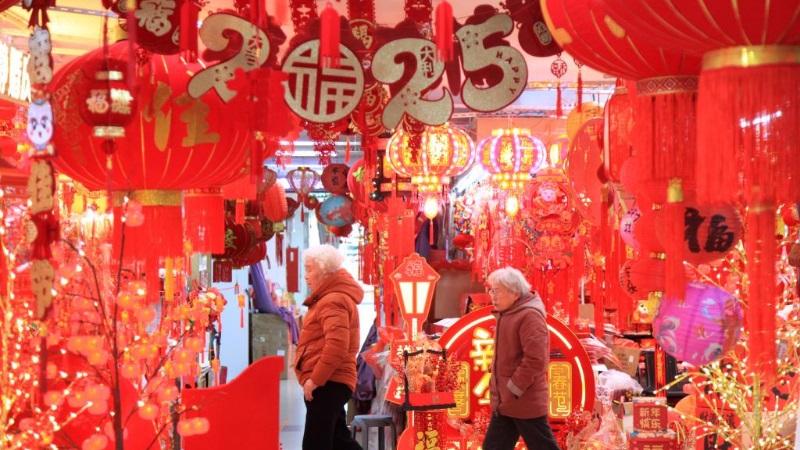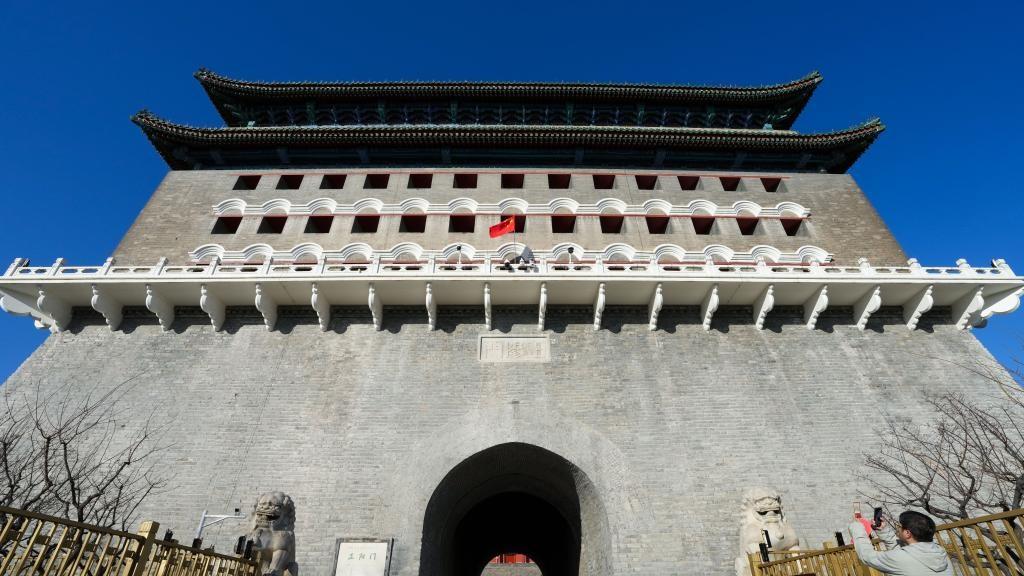RCEP showcases success of open world economy
SYDNEY, Jan. 1 (Xinhua) -- As the Regional Comprehensive Economic Partnership (RCEP) celebrates its third anniversary of entry into force on Wednesday, it is widely believed that the agreement has demonstrated that free trade is beneficial for economic growth and market prosperity.
Experts and scholars called on regional countries and their global partners to further join hands to facilitate trade and investment, and build an open world economy.
FACILITATING TRADE, INVESTMENT
The RCEP comprises 15 countries, including 10 countries of the Association of Southeast Asian Nations (ASEAN), as well as China, Japan, South Korea, Australia and New Zealand. Officially entered into force on Jan. 1, 2022, the RCEP has fostered regional cooperation that shares benefits and promotes development.
According to data from China's General Administration of Customs, China saw a yearly increase of 7.5 percent in its trade with other RCEP members in 2022. In 2023, China's foreign trade value with 14 RCEP members marked a 5.3 percent increase compared with that in 2021. In the first 10 months of 2024, China's trade with other RCEP countries was up 4.3 percent.
Chaipong Pongpanich, an associate professor at Sasin School of Management of Chulalongkorn University, Thailand, told Xinhua that the industrial chain between ASEAN countries and China is complementary, and the RCEP has brought huge market opportunities for enterprises in the region.
Taking Thailand as an example, Chaipong said durian, mango, coconut and other tropical fruits could easily enter the Chinese market, benefiting Thai fruit farmers a lot. Meanwhile, Chinese Electric Vehicles (EVs) are actively expanding into the Thai market, providing Thai people with more choices and advanced technology, promoting employment, and helping Thailand form an EV industry chain.
In May, the China Institute for Reform and Development released a preliminary assessment report on 2022-2023 RCEP implementation, saying that the fast growth of China-ASEAN trade and investment became a highlight in jointly building an RCEP integrated market. In 2022, Laos, Indonesia, Brunei and Malaysia achieved the highest growth in trade with other RCEP members.
"There's lots of money being invested in the ASEAN area compared with previous decades, because the West is going protectionist," said Andrew Robb, former Australian minister of trade, investment and tourism.
STANDING AGAINST PROTECTIONISM
Experts and scholars believed that protectionism and tariff barriers would reduce economic efficiency, fragment the global trade system, and pose risks to the world economy and even to peace and stability.
"(Trade protectionism) never has worked in centuries, and it's not going to work now. People think it will protect their jobs, but in the end, it doesn't because it cramps growth," Robb told Xinhua.
Remy Davison, senior lecturer in politics and international relations at Monash University, Australia, said imposing tariff barriers may seem to lead to some re-shoring of industrial capacity, but in reality, it will increase costs for that country's businesses and consumers, push up inflation, and even affect global economic growth.
Lawrence Loh, director of the Center for Governance and Sustainability at the National University of Singapore Business School, took the United States as an example, saying that ultimately, the victims of tariff by the U.S. government will be the American people, because the tariff added will translate to higher prices.
He also noted that tariff barriers will negatively impact the entire value chain and the supply chain of the world, bringing widespread influence on every single part of the economic system.
UNLOCKING POTENTIAL FOR SHARED SUCCESS
In June 2015, Robb, representing the Australian government, officially signed a free trade agreement with China. After nearly 10 years, this agreement has brought significant growth to the trade volume between the two countries. Furthermore, as both sides diversify their trade, the bilateral trade volume is showing even more potential for growth.
"It was a great privilege to negotiate and sign the free trade agreement with China," he said.
This agreement is a microcosm of how open development drives mutually beneficial cooperation between nations. As a free trade area with the hugest population, the largest trade scale and the greatest potential for development, the RCEP is set to inject more vitality into regional economic integration in the Asia-Pacific.
Hidetoshi Tashiro, chief economist of Japan's Infinity LLC., said economies in the Asia-Pacific should work together and demonstrate the success of free trade to safeguard global trade order and build an open world economy.
Looking to the future, the preliminary assessment report on 2022-2023 RCEP implementation noted that there is still huge potential to tap into RCEP policy in terms of promoting trade and investment, raising enterprises' utilization rate of RCEP rules, and facilitating economic growth.
According to a study conducted by the Asian Development Bank, the RCEP is expected to increase the member economies' incomes by 0.6 percent by 2030, adding 245 billion U.S. dollars annually to regional income and 2.8 million jobs to regional employment.
Experts believe that amid increasing global uncertainties, the signing and implementation of the RCEP not only bring massive economic benefits to member countries but also boost the international community's confidence in multilateralism.
"We should strongly believe in free trade. This is the only way the world can progress forward in unimpeded flow of goods and services, so that all economies can take part in these benefits of sharing comparative advantages," Loh said.
Photos
Related Stories
- Cambodia's exports to RCEP members up 14.4 pct in first 11 months of 2024
- Global Chinese economic, technology summit held in Cambodia to boost cooperation
- Bangladesh economy set to gain from RCEP’s diverse trade facilitation
- Roundtable on utilization rate of RCEP rules held in Malaysia
- RCEP, bilateral FTAs boost Cambodia's economic growth: PM
Copyright © 2025 People's Daily Online. All Rights Reserved.









